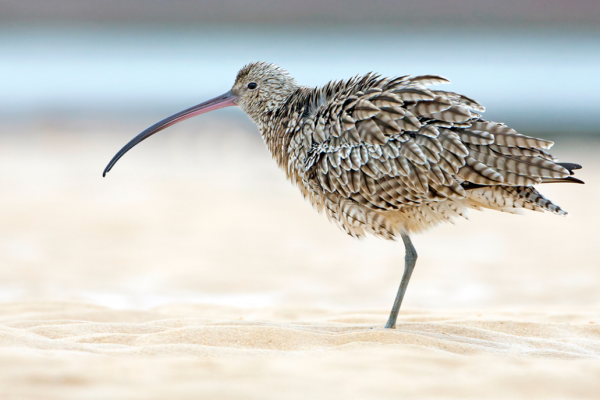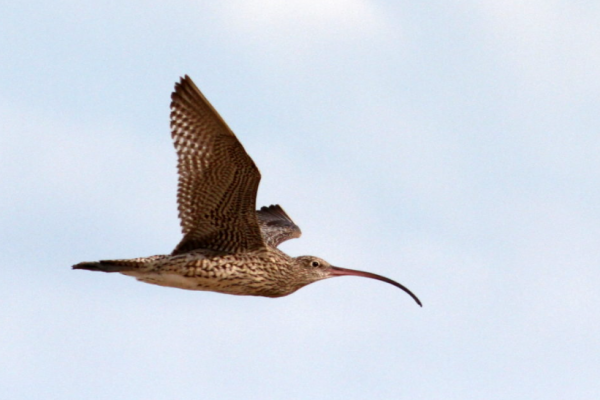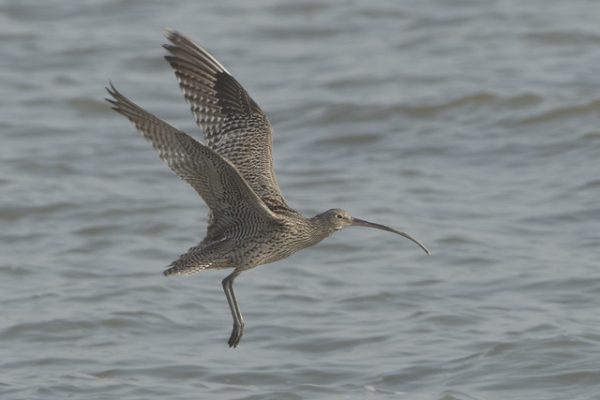-
公民科学家发现水鸟灭绝的原因
Read in other languages: Press Release (13 April 2017) Translated by 中国生物多样性保护与绿色发展基金会 由公民科学家和研究者组成的国际团队近期发现了澳大利亚迁徙鸟类数量锐减的主要原因。 昆士兰大学生物科学院研究员,副教授理查德•富勒说,远在东北亚地区的滩涂退化和破坏使澳大利亚水鸟受到极大威胁。 副教授理查德•富勒所在研究团队由马里兰大学助理教授柯林•斯塔兹博士牵头研究水鸟。 斯塔兹博士说迁徙鸟类数量减少的一个关键性因素是它们对黄海滩涂(位于中国和韩国之间)的依赖性。 斯塔兹博士说“一个物种对逐渐减退的黄海滩涂依赖性越大,消失的速度越快。” 他说受到威胁的鸟类包括黑尾豫、杓鹬和矶鹬。 许多鸟类从澳大利亚非繁育地飞往北极繁育地,需要通过东亚-澳大利亚迁徙路线,在黄海休息、补充体力。 斯塔兹博士说“科学家一直以来都认为鸟类减少和这些中转站的减少有关,但没有确切的证据。” 研究者分析了公民科学家从1993年至2012年搜集的10类重要物种的数据,他们的发现十分惊人。 即使鸟类每年仅在滩涂停留一到两个月时间,这也是其数量变化的决定性因素。 副教授富勒说,这一研究是基于澳大利亚和新西兰志愿者提供的几十年的鸟类统计数据。 他说,“没有他们的贡献,这项研究是不可能实现的。” 澳大利亚已经和中国、韩国和日本签署了保护迁徙鸟类的条约,但鸟类数量仍在下降。 副教授富勒说“迁徙路线沿途的各个国家都必须保护栖息地、减少捕杀,避免鸟类数量不断下降甚至灭绝。” “中国和韩国近期开始将黄海列入世界遗产保护地,我们感到十分高兴。” 这项研究在《自然通讯》上发表,研究者来自澳大利亚、美国、英国和新西兰。 Original press release: Citizen scientists help identify shorebird extinction threat Original journal article: Rapid population decline in migratory shorebirds relying on Yellow Sea tidal mudflats as stopover sites (PDF) […]
Continue reading -
Declining Long-distance Shorebirds linked to Yellow Sea Mudflat Loss
Read in other languages: EAAFP Secretariat Birdwatchers have been watching, counting and monitoring shorebirds along the coasts of Australia and New Zealand for many years, resulting, at some sites, in decades-long datasets. Now, these amateur “citizen scientists” have teamed up with researchers to use this long-term information to identify trends in individual species’ populations […]
Continue reading -
Saving a migratory icon: Recovering the Far Eastern Curlew
Micha Jackson, Magazine of the Threatened Species Recovery Hub The Far Eastern Curlew is a species of migratory shorebird, with a migration that can truly be described as spectacular. Every year they travel from their non-breeding grounds in the southern hemisphere to breed in boreal marshlands of the northern hemisphere. But, as Micha Jackson from […]
Continue reading -
中国渤海湾和黄海沿岸14处重要迁徙水鸟栖息地加入世界遗产地预备名单
选择其他语言: 中国渤海湾和黄海沿岸14处重要迁徙水鸟栖息地加入世界遗产地预备名单 East Asian-Australasian Flyway Partnership 中国渤海湾和黄海沿岸的14处湿地近日加入世界遗产地名录的预备清单,这是中国的滨海湿地得到认可和保护工作迈出的重大一步。 黄海(包括渤海湾在内)的大面积泥质滩涂、沙质滩涂及与之相连的周边栖息地是全球面积最大的潮间带湿地之一,涉及中国、朝鲜和韩国。该地区也是世界最重要的迁飞路线——东亚—澳大利西亚迁飞路线上最为重要的迁徙水鸟停留地。 在北方的春季,斑尾塍鹬(东北亚亚种baueri和中部亚种menzbieri))的迁徙种群从位于澳大利亚和新西兰的非繁殖地起飞,在经过长达七天七夜的连续飞行后,会在黄海停留和补充能量,之后再向俄罗斯北极地区和阿拉斯加的繁殖地迁徙。此刻,超过1万只斑尾塍鹬已回到这次列入世界遗产地预备清单中的一块滨海湿地——地处中国和朝鲜边界的鸭绿江河口湿地。 红腹滨鹬的两个亚种(rogersi和piersmai)也在黄海滩涂区停留,60%的红腹滨鹬全球种群会在另一个这次列入世界遗产地预备清单中的湿地——渤海湾滦南湿地停留。 极危物种勺嘴鹬目前全球种群数量不足1000只,其生存严重依赖于苏南沿海滩涂,特别在秋季迁徙期间。 该地区不仅是一个重要的迁徙水鸟停留地,也是包括易危物种黑嘴鸥和濒危物种黑脸琵鹭在内的本地特有受威物种整个繁殖种群的重要栖息地。 数百万只依赖这些湿地生存的水鸟是黄海生态系统服务功能的指标,这些重要的生态系统服务功能包括渔业、旅游业、减灾和适应气候变化等,为该地区的社会经济发展和人类福祉提供了重要的生态支撑。该地区约有2亿多人口,人口密度每平方公里超过500人,是全世界人口密度最大的沿海地区。 黄海栖息地的丧失以及迁徙水鸟所遭遇的困境令人担忧。2012年9月在韩国济州岛举行的世界自然保护联盟第五届“世界自然保护大会”上,有关方面呼吁确保建立一个针对黄海(包括渤海湾)潮间带湿地及其鸟类保护管理的适宜框架。在本次大会上,所有拥有选举权的政府全票通过了一项名为“保护东亚—澳大利西亚迁飞路线及其受威水鸟,特别是黄海地区”的决议。此后,中韩两国于2014年和2016年先后在北京和仁川分别由北京林大和韩国环境部组织举行了研讨会,以便落实该项决议。2016年8月,两国共同召集了研讨会,来自中韩两国负责世界遗产地保护管理的政府部门代表就黄海滨海湿地的世界遗产申报问题进行了讨论。2016年在夏威夷召开的第六届世界自然保护大会上,通过了另外一个名为“在全球范围内保护东亚—澳大利西亚迁飞路线潮间带栖息地,特别是黄海地区及其迁徙水鸟”的决议。 中国住房和城乡建设部具体负责中国世界遗产地的申报工作,一直在积极开展关键遗产提名地的认定工作,并与不同的利益相关方合作,在中国自然保护非政府组织山水自然保护中心的技术援助下,扩大现有的世界遗产预备名单。住建部认识到,预备名单可能并不全面,但随着申报工作的推进,可能会有更多的地点纳入到名单中。 中韩两国对黄海滨海湿地申报世界遗产地的工作让人们日益认识到这些湿地对于全球的重要性,有望使这些地方得到更好的保护管理,从而有助于迁徙水鸟的长期生存。 Contact Details Mr. Spike Millington (EAAFP — Chief Executive) Office: +82 32 458 6509 Email: chief@eaaflyway.net (9 am to 6 pm) Tomoko Ichikawa (EAAFP — Communication Officer) Office +82 32 458 6504 Email: communication@eaaflyway.net (9 am to 6 […]
Continue reading -
Transboundary collaboration to save Far Eastern Curlew
Mark Carey (Chair) and Connie Warren (Coordinator) Far Eastern Curlew Task Force The Far Eastern Curlew Numenius madagascariensis is one of the largest shorebirds in the world. Its very large size (900 g) and very long bill (19cm) distinguishes it from other similar species in Australia and the East Asian–Australasian Flyway (Flyway). It is endemic to […]
Continue reading -
Baer’s Pochard: Cause For Optimism?
11 March 2017 Birding Beijing Last week I was invited to Hengshui Hu in Hebei Province by officials from the German government-owned development bank, KfW. In partnership with the Hengshui Hu nature reserve and Hengshui University, KfW is beginning a project to support the sustainable management of this impressive wetland which, as well as supporting breeding […]
Continue reading -
Why are we losing our large waders?
1 March 2017 Graham Appleton, WaderTales A review of the global threats to the world’s Numeniini (curlews, godwits & Upland Sandpiper) has just been published. It does not make for good reading. It is estimated that hundreds of thousands of Eskimo Curlews were migrating the full length of the two American continents 150 years ago – […]
Continue reading -
Over-half of the world’s curlew and godwit species face extinction from habitat loss and other pressures.
Press Release (Mar 2017) British Trust for Ornithology (BTO) A new ground-breaking assessment published today in the journal Bird Conservation International has revealed that loss of habitat could lead to the extinction of a number of species of curlew and godwit, some of which are found in the UK. The world’s godwit and curlew species […]
Continue reading -
Sand mining poses threat to wetland and coastal habitats and biodiversity
Spike Millington, Chief Executive, EAAFP Secretariat While we focus on the loss of coastal habitat for ever-expanding infrastructural demands, from new residential developments to large ports, there is another insidious aspect to this development, which is the apparently insatiable demand for sand and gravel to make the concrete for the buildings. The production of this […]
Continue reading -
Where have the tracked spoonies spent the last few months?
26 February 2017 Rebecca Lee, Saving the Spoon-billed Sandpiper The last time you heard from us about the birds that are being satellite tracked was on the 17 November last year. Why no news since? There simply hasn’t been much to report. But no news is good news. The birds have all spent the non-breeding season at […]
Continue reading




